
Gnosticism is a collection of religious ideas and systems that coalesced in the late 1st century AD among Jewish and early Christian sects. These various groups emphasized personal spiritual knowledge (gnosis) above the proto-orthodox teachings, traditions, and authority of religious institutions.

Mystery religions, mystery cults, sacred mysteries or simply mysteries, were religious schools of the Greco-Roman world for which participation was reserved to initiates (mystai). The main characterization of this religion is the secrecy associated with the particulars of the initiation and the ritual practice, which may not be revealed to outsiders. The most famous mysteries of Greco-Roman antiquity were the Eleusinian Mysteries, which predated the Greek Dark Ages. The mystery schools flourished in Late Antiquity; Emperor Julian, of the mid 4th century, is believed by some scholars to have been associated with various mystery cults—most notably the mithraists. Due to the secret nature of the school, and because the mystery religions of Late Antiquity were persecuted by the Christian Roman Empire from the 4th century, the details of these religious practices are derived from descriptions, imagery and cross-cultural studies. Much information on the Mysteries comes from Marcus Terentius Varro.

Rosicrucianism is a spiritual and cultural movement that arose in early modern Europe in the early 17th century after the publication of several texts announcing to the world a new esoteric order. Rosicrucianism is symbolized by the Rosy Cross or Rose Cross. There have been several Rosicrucian organizations since the initial movement was founded, including the Order of the Golden and Rosy Cross (1750s–1790s), the Societas Rosicruciana in Anglia (1865–present), and the Hermetic Order of the Golden Dawn (1887–1903).
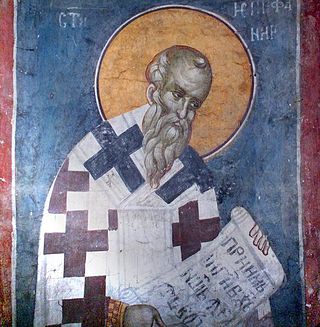
Epiphanius of Salamis was the bishop of Salamis, Cyprus, at the end of the 4th century. He is considered a saint and a Church Father by both the Eastern Orthodox and Catholic Churches. He gained a reputation as a strong defender of orthodoxy. He is best known for composing the Panarion, a compendium of eighty heresies, which included also pagan religions and philosophical systems. There has been much controversy over how many of the quotations attributed to him by the Byzantine Iconoclasts were actually by him. Regardless of this he was clearly strongly against some contemporary uses of images in the church.
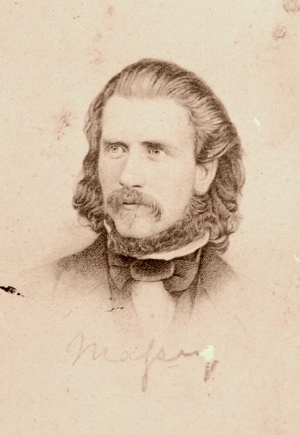
Gerald Massey was an English poet and writer on Spiritualism and Ancient Egypt.
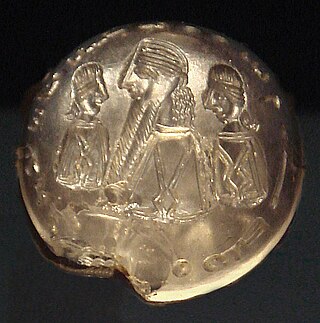
Mani was an Iranian prophet and the founder of Manichaeism, a religion most prevalent in late antiquity.
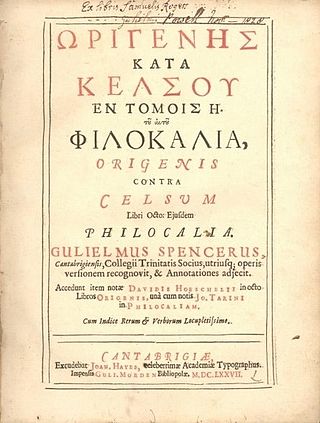
Celsus was a 2nd-century Greek philosopher and opponent of early Christianity. His literary work, The True Word, survives exclusively in quotations from it in Contra Celsum, a refutation written in 248 by Origen of Alexandria. The True Word is the earliest known comprehensive criticism of Christianity.
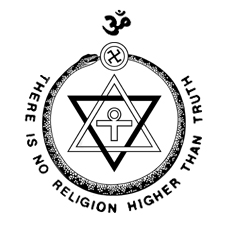
Ascended masters in a number of movements in the theosophical tradition are held to be spiritually enlightened beings who in past incarnations were ordinary humans, but who have undergone a series of spiritual transformations originally called initiations.

"The Joy of Sect" is the thirteenth episode of the ninth season of the American animated television series The Simpsons. It originally aired on the Fox network in the United States on February 8, 1998. In the episode, a cult takes over Springfield, and the Simpson family become members.
The Sethians were one of the main currents of Gnosticism during the 2nd and 3rd century AD, along with Valentinianism and Basilideanism. According to John D. Turner, it originated in the 2nd century AD as a fusion of two distinct Hellenistic Judaic philosophies and was influenced by Christianity and Middle Platonism. However, the exact origin of Sethianism is not properly understood.

The Jesus Mysteries: Was the "Original Jesus" a Pagan God? is a 1999 book by British authors Timothy Freke and Peter Gandy, which advances the argument that early Christianity originated as a Greco-Roman mystery cult and that Jesus was invented by early Christians based on an alleged pagan cult of a dying and rising "godman" known as Osiris-Dionysus, whose worship the authors claim was manifested in the cults of Osiris, Dionysus, Attis, and Mithras.
Marius the Epicurean: his sensations and ideas is a historical and philosophical novel by Walter Pater, written between 1881 and 1884, published in 1885 and set in 161–177 AD, in the Rome of the Antonines. It explores the intellectual development of its protagonist, a young Roman of integrity, in his pursuit of a congenial religion or philosophy at a time of change and uncertainty that Pater likened to his own era. The narration is third-person, slanted from Marius's point of view, added to which are various interpolated discourses, ranging from adaptations of classical and early Christian writings to Marius’s diary and authorial comment.

Against Celsus, preserved entirely in Greek, is a major apologetics work by the Church Father Origen of Alexandria, written in around 248 AD, countering the writings of Celsus, a pagan philosopher and controversialist who had written a scathing attack on Christianity in his treatise The TrueWord. Among a variety of other charges, Celsus had denounced many Christian doctrines as irrational and criticized Christians themselves as uneducated, deluded, unpatriotic, close-minded towards reason, and too accepting of sinners. He had accused Jesus of performing his miracles using black magic rather than actual divine powers and of plagiarizing his teachings from Plato. Celsus had warned that Christianity itself was drawing people away from traditional religion and claimed that its growth would lead to a collapse of traditional, conservative values.

The concept of Hellenistic religion as the late form of Ancient Greek religion covers any of the various systems of beliefs and practices of the people who lived under the influence of ancient Greek culture during the Hellenistic period and the Roman Empire. There was much continuity in Hellenistic religion: people continued to worship the Greek gods and to practice the same rites as in Classical Greece.
The unknown years of Jesus generally refers to the period of Jesus's life between his childhood and the beginning of his ministry, a period not described in the New Testament.

Disciplina arcani was a custom that prevailed in the 4th and 5th centuries of Christianity, whereby knowledge of certain doctrines and rites of the Christian religion was kept from non-Christians and even from those who were undergoing instruction in the faith so that they may progressively learn the teachings of the faith and not fall to heresy due to simplistic misunderstandings.
The True Word is a lost treatise in which the ancient Greek philosopher Celsus addressed many principal points of early Christianity and refuted or argued against their validity. In The True Word, Celsus attacked Christianity in three ways: by refuting its philosophical claims, by marking it as a phenomenon associated with the uneducated and lower class, and by cautioning his audience that it was a danger to the Roman Empire. Information concerning the work exists only in the extensive quotations from it in the Contra Celsum, written some seventy years later by the Christian Origen. These are believed to be accurate as far as they go, but may not give a fully comprehensive picture of the original work.

Edmund Buczynski was an American Wiccan and archaeologist who founded two separate traditions of Wicca: Welsh Traditionalist Witchcraft and The Minoan Brotherhood.
Samuel Lyde (1825–1860) was an English writer and Church of England missionary who lived and worked in Syria in the 1850s and wrote a pioneering book on the Alawite sect. In 1856, he sparked months of anti-Christian rioting in Ottoman Palestine when, during a visit there, he killed a beggar.

The mysteries of Isis were religious initiation rites performed in the cult of the Egyptian goddess Isis in the Greco-Roman world. They were modeled on other mystery rites, particularly the Eleusinian mysteries in honor of the Greek goddesses Demeter and Persephone, and originated sometime between the third century BCE and the second century CE. Despite their mainly Hellenistic origins, the mysteries alluded to beliefs from ancient Egyptian religion, in which the worship of Isis arose, and may have incorporated aspects of Egyptian ritual. Although Isis was worshipped across the Greco-Roman world, the mystery rites are only known to have been practiced in a few regions. In areas where they were practiced, they served to strengthen devotees' commitment to the Isis cult, although they were not required to worship her exclusively, and devotees may have risen in the cult's hierarchy by undergoing initiation. The rites may also have been thought to guarantee that the initiate's soul, with the goddess's help, would continue after death into a blissful afterlife.
















